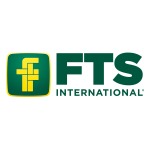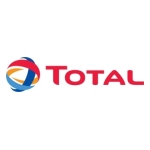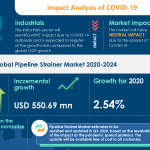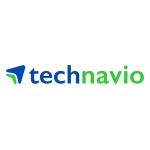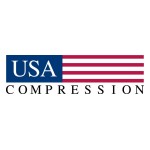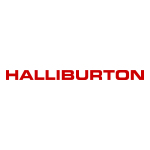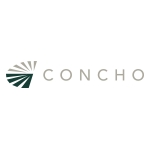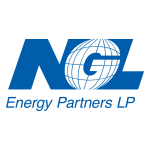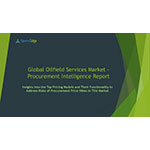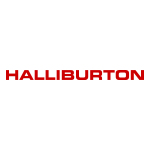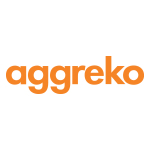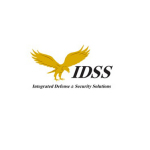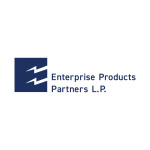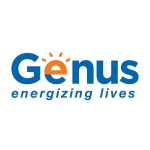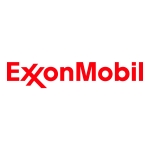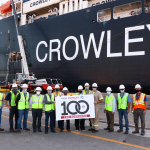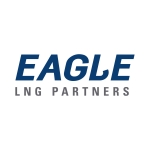SCOTTSDALE, Ariz.--(BUSINESS WIRE)--Nuverra Environmental Solutions, Inc. (NYSE American: NES) (“Nuverra,” the “Company,” “we,” “us” or “our”) today announced financial and operating results for the second quarter and six months ended June 30, 2020.
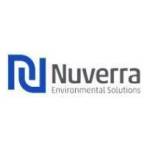
SUMMARY OF FINANCIAL RESULTS
-
Revenue for the second quarter of 2020 was $24.5 million compared to $45.2 million for the second quarter of 2019.
-
Net loss for the second quarter of 2020 was $6.8 million compared to a net loss of $5.0 million for the second quarter of 2019.
-
For the second quarter of 2020, adjusted EBITDA decreased $2.8 million to $2.5 million versus $5.3 million for the second quarter of 2019 driven by significant commodity price and subsequent activity declines year over year partially offset by meaningful fixed and variable cost reductions.
-
Revenue for the six months ended June 30, 2020 was $62.4 million compared to $87.9 million for the six months ended June 30, 2019.
-
Net loss for the six months ended June 30, 2020 was $29.8 million compared to a net loss of $11.4 million for the six months ended June 30, 2019, primarily a result of $15.6 million long-lived asset impairment charges taken in the six months ended June 30, 2020.
-
For the six months ended June 30, 2020, adjusted EBITDA decreased $5.4 million to $4.4 million versus $9.8 million for the six months ended June 30, 2019.
-
During the first half of 2020, the Company generated net cash provided by operating activities of $9.8 million.
-
Principal payments on debt and finance lease payments during the first half of 2020 totaled $3.0 million.
-
The Company invested $2.3 million in gross capital expenditures during the first half of 2020.
“In these challenging times, we have continued to focus on growing market share and managing costs throughout the business while watching liquidity closely to best position the Company for the recovery. While oil prices have improved from the lows and some producers are turning wells back online, the macroeconomic challenges of COVID-19 and subsequent depressed commodity price environment will likely continue throughout the rest of the year. Our Rocky Mountain division experienced significant declines as expected in the second quarter due to the lower oil price, which was fortunately counterbalanced by some stability in our natural gas-focused Southern and Northeast divisions. On a bright note, we successfully amended our credit facilities, which is a very positive development in this extremely challenging debt market, generated more adjusted EBITDA in the second quarter of 2020 than we did in the first quarter, and ended the quarter with a cash balance of $15.8 million. While we remain cautious, we believe through intense focus, dedication and hard work by all employees at the Company we are positioned as well as we can be to weather this environment,” said Charlie Thompson, Chief Executive Officer.
SECOND QUARTER 2020 RESULTS
When compared to the second quarter of 2019, revenue decreased by 45.9%, or $20.8 million, resulting primarily from lower activity levels in water transport services and disposal services across all three divisions. The major underlying driver for this decrease was lower commodity prices for both crude oil and natural gas, which decreased 53.4% and 33.9%, respectively, over this time period. This led to a decline in both drilling and completion activity with fewer rigs operating in all three divisions as well as wells being shut-in primarily in the Northeast condensate window and the Rocky Mountain division by producers due to wells becoming uneconomic at prevailing oil prices and a lack of storage for oil and natural gas liquids as refineries significantly curtailed refined product production due to COVID-19-related demand loss for gasoline, diesel and jet fuel. Rig count at the end of the second quarter of 2020 compared to the end of the second quarter of 2019 declined 82% in the Rocky Mountain division, 52% in the Northeast division and 44% in the Southern division.
The Rocky Mountain division experienced a significant slowdown, with rig count declining 82% from 55 at June 30, 2019 to 10 at June 30, 2020 in addition to producers shutting in wells due to the decline in oil price, which averaged $28.00 in the second quarter of 2020 versus an average of $60.03 for the same period in 2019. Revenues for the Rocky Mountain division decreased by $16.8 million during the second quarter of 2020 as compared to the second quarter of 2019 primarily due to a decrease in water transport revenues from lower trucking volumes, with third-party trucking activity being the largest factor. While company-owned trucking activity is more levered to production water volumes, third-party trucking activity is more sensitive to drilling and completion activity, which has declined to historically low levels. Our rental and landfill businesses are our two service lines most levered to drilling activity and therefore have declined by the highest percentage versus the prior period. Rental revenues decreased by 62% in the current year due to lower utilization resulting from a significant decline in drilling activity driving the return of rental equipment. Additionally, we experienced a 74% decrease in disposal volumes at our landfill as rigs working in the vicinity declined materially. Well shut-ins and lower completion activity led to a 48% decrease in average barrels per day disposed in our saltwater disposal wells during the current year, with water from producing wells continuing to maintain a base level of volume activity.
Revenues for the Northeast division decreased by $2.6 million during the second quarter of 2020 as compared to the second quarter of 2019 due to decreases in both water transport services and disposal services. Natural gas prices, as measured by the Henry Hub Natural Gas Index decreased 33.9% from an average of $2.57 for the three months ended June 30, 2019 to an average of $1.70 for the three months ended June 30, 2020, contributing to a 52% rig count reduction in the Northeast operating area from 75 at June 30, 2019 to 36 at June 30, 2020. Additionally, as a result of the 53.4% decline in oil prices experienced during the period, many of our customers who had historically focused on production of liquids-rich wells reduced activity levels and shut in some production in our operating area due to lower realized prices for these products. This led to lower activity levels for both water transport services and disposal services despite the relatively lower decrease in natural gas prices versus crude oil. In addition to reduced drilling and completion activity due to commodity prices, our customers continued the industry trend of water reuse during completion activities. Water reuse inherently reduces trucking activity due to shorter hauling distances as water is being transported between well sites rather than to disposal wells. For our trucking services, total billable hours were down 11% from the prior year and pricing decreases also contributed to the decline. Disposal volumes decreased in our saltwater disposal wells resulting in a 15% decrease in average barrels per day.
The Southern division experienced the lowest revenue decline relative to the other business units, driven by its focus on servicing customers who are themselves focused on dry natural gas, which has experienced a relatively smaller impact from the 2020 downturn in commodity prices. Revenues for the Southern division decreased by $1.4 million during the second quarter of 2020 as compared to the second quarter of 2019 due primarily to lower disposal well volumes, whether connected to the pipeline or not, resulting from an activity slowdown in the region, as evidenced by fewer rigs operating in the area. Rig count declined 44% in the area, from 62 at June 30, 2019 to 35 at June 30, 2020. Volumes received in our disposal wells not connected to our pipeline decreased by an average of 12,471 barrels per day (or 39%) during the current year and volumes received in the disposal wells connected to the pipeline decreased by an average of 7,092 barrels per day (or 16%) during the current year.
Total costs and expenses for the second quarter of 2020 and 2019 were $30.2 million and $49.1 million, respectively. Total costs and expenses, adjusted for special items, for the second quarter of 2020 were $29.1 million, or a 40.9% decrease, when compared with $49.3 million in the second quarter of 2019. This is primarily a result of lower activity levels for water transport services and disposal services, resulting in a decline in compensation costs, third-party hauling costs and fleet-related expenses, including fuel and maintenance and repair costs. In addition, the Company enacted cost-cutting and optimization measures in the first quarter of 2020 which began to take effect in the second quarter of 2020.
Net loss for the second quarter of 2020 was $6.8 million, an increase of $1.8 million as compared to a net loss for the second quarter of 2019 of $5.0 million. For the second quarter of 2020, the Company reported a net loss, adjusted for special items, of $5.8 million. This compares with a net loss, adjusted for special items, of $5.3 million in the second quarter of 2019.
Adjusted EBITDA for the second quarter of 2020 was $2.5 million, a decrease of 52.2% as compared to adjusted EBITDA for the second quarter of 2019 of $5.3 million. The decrease is a function of the reasons discussed previously, with primary drivers being lower trucking volumes, saltwater disposal volumes and rental equipment utilization in the Rocky Mountain region. Second quarter of 2020 adjusted EBITDA margin was 10.3%, compared with 11.7% in the second quarter of 2019.
YEAR-TO-DATE (“YTD”) RESULTS FOR THE SIX MONTHS ENDED JUNE 30, 2020
When compared to YTD 2019, YTD 2020 revenue decreased by 29.0%, or $25.5 million, due primarily to lower activity levels in water transport services and disposal services across all three divisions. The major underlying driver for this decrease was lower commodity prices for both crude oil and natural gas, which decreased 36.0% and 33.9%, respectively, over this time period. This led to a decline in both drilling and completion activity with fewer rigs operating in all three divisions as well as wells being shut-in primarily in the Northeast condensate window and the Rocky Mountain division by producers due to wells becoming uneconomic at prevailing oil prices and a lack of storage for oil and natural gas liquids as refineries significantly curtailed refined product production due to COVID-19 related demand loss for gasoline, diesel and jet fuel. Rig count at the end of the second quarter of 2020 compared to the end of the second quarter of 2019 declined 82% in the Rocky Mountain division, 52% in the Northeast division and 44% in the Southern division.
The Rocky Mountain division experienced a significant slowdown, with rig count declining 82% from 55 at June 30, 2019 to 10 at June 30, 2020 in addition to producers shutting in wells due to the decline in oil price, which averaged $36.82 YTD 2020 versus an average of $57.53 for the same period in 2019. Revenues for the Rocky Mountain division decreased by $18.2 million during YTD 2020 as compared to YTD 2019 primarily due to a decrease in water transport revenues from lower trucking volumes, with third-party trucking activity being the largest factor. While company-owned trucking activity is more levered to production water volumes, third party trucking activity is more sensitive to drilling and completion activity, which has declined to historically low levels. Our rental and landfill businesses are our two service lines most levered to drilling activity and therefore have declined by the highest percentage versus the prior period. Rental revenues decreased by 34% in the current year due to lower utilization resulting from a significant decline in drilling activity driving the return of rental equipment. Additionally, we experienced a 37% decrease in disposal volumes at our landfill as rigs working in the vicinity declined materially. Well shut-ins and lower completion activity led to a 26% decrease in average barrels per day disposed in our saltwater disposal wells during the current year, with water from producing wells continuing to maintain a base level of volume activity.
Revenues for the Northeast division decreased by $4.6 million during YTD 2020 as compared to YTD 2019 due to decreases in both water transport services and disposal services. Natural gas prices, as measured by the Henry Hub Natural Gas Index decreased 33.9% from an average of $2.74 for YTD 2019 to an average of $1.81 for YTD 2020, contributing to a 52% rig count reduction in the Northeast operating area from 75 at June 30, 2019 to 36 at June 30, 2020. Additionally, as a result of the 36.0% decline in oil prices experienced during the period, many of our customers who had historically focused on production of liquids-rich wells reduced activity levels and shut-in some production in our operating area due to lower realized prices for these products. This led to lower activity levels for both water transport services and disposal services despite the relatively lower decrease in natural gas prices versus crude oil. In addition to reduced drilling and completion activity due to commodity prices, our customers continued the industry trend of water reuse during completion activities. Water reuse inherently reduces trucking activity due to shorter hauling distances as water is being transported between well sites rather than to disposal wells. For our trucking services, total billable hours were down 7% from the prior year and pricing decreases also contributed to the decline. Disposal volumes decreased in our saltwater disposal wells resulting in a 15% decrease in average barrels per day.
The Southern division experienced the lowest revenue decline relative to the other business units, driven by its focus on servicing customers who are themselves focused on dry natural gas, which has experienced a relatively smaller impact from the 2020 downturn in commodity prices. Revenues for the Southern division decreased by $2.7 million during YTD 2020 as compared to YTD 2019 due primarily to lower disposal well volumes, whether connected to the pipeline or not, resulting from an activity slowdown in the region, as evidenced by fewer rigs operating in the area. Rig count declined 44% in the area, from 62 at June 30, 2019 to 35 at June 30, 2020. Volumes received in our disposal wells not connected to our pipeline decreased by an average of 9,711 barrels per day (or 30%) during the current year, and volumes received in the disposal wells connected to the pipeline decreased by an average of 8,609 barrels per day (or 18%) during the current year.
Total costs and expenses for YTD 2020 and 2019 were $90.1 million and $96.4 million, respectively. Total costs and expenses, adjusted for special items, for YTD 2020 were $73.2 million, or a 24.2% decrease, when compared with $96.6 million for YTD 2019. This is primarily a result of lower activity levels for water transport services and disposal services, resulting in a decline in compensation costs, third-party hauling costs and fleet-related expenses, including fuel and maintenance and repair costs. In addition, the Company enacted cost-cutting and optimization measures in the first quarter of 2020 which began to take effect in the second quarter of 2020.
Net loss for YTD 2020 was $29.8 million, an increase of $18.5 million as compared to a net loss for YTD 2019 of $11.4 million. For YTD 2020, the Company reported a net loss, adjusted for special items, of $13.0 million. This compares with a net loss, adjusted for special items, of $11.5 million for YTD 2019.
Adjusted EBITDA for YTD 2020 was $4.4 million, a decrease of 55.0% as compared to adjusted EBITDA for the YTD 2019 of $9.8 million. The decrease is a function of the reasons discussed previously, with primary drivers being lower trucking volumes, saltwater disposal volumes and rental equipment utilization in the Rocky Mountain region. YTD 2020 adjusted EBITDA margin was 7.1%, compared with 11.2% in YTD 2019 driven primarily by lower margin work in 2020 and property tax reductions in 2019 that were not repeated in 2020.
CASH FLOW AND LIQUIDITY
Net cash provided by operating activities for the six months ended June 30, 2020 was $9.8 million, while gross capital expenditures of $2.3 million net of asset sales of $1.5 million consumed cash of $0.8 million. Net cash provided by financing activities was $1.0 million for the six months ended June 30, 2020, consisting primarily of $4.0 million of proceeds from the Paycheck Protection Program loan (“PPP Loan”) partially offset by principal payments on debt and finance lease payments.
As of June 30, 2020, total liquidity was $23.0 million, consisting of $17.3 million of cash and available revolver borrowings and $5.7 million delayed borrowing capacity under our second lien term loan. As of June 30, 2020, total debt outstanding was $37.9 million, consisting of $16.4 million under our senior secured term loan facility, $8.8 million under our second lien term loan facility, $4.0 million under our PPP Loan, $0.5 million for a vehicle term loan, $0.2 million for an equipment term loan and $8.0 million of finance leases.
On July 13, 2020, we entered into agreements with our lenders to extend the maturity date on our secured credit facilities and to modify the financial covenants to better reflect our current and projected financial profile. These amendments consisted of a Third Amendment to our First Lien Credit Agreement and the Second Amendment to our Second Lien Credit Agreement. The amendments extended the maturity of our first lien facility from February 7, 2021 to May 15, 2022, our second lien facility from October 7, 2021 to November 15, 2022, and included among other terms and conditions, deferral of the measurement of the fixed charge coverage ratio ("FCCR") covenant until the second quarter of 2021. Among other terms and conditions, the amendments prohibit draws on our revolving facility until the FCCR is above an established certain ratio, add a covenant that requires us to maintain a monthly minimum liquidity, and establish maximum capital expenditures covenants for 2020 and 2021.
About Nuverra
Nuverra Environmental Solutions, Inc. provides water logistics and oilfield services to customers focused on the development and ongoing production of oil and natural gas from shale formations in the United States. Our services include the delivery, collection, and disposal of solid and liquid materials that are used in and generated by the drilling, completion, and ongoing production of shale oil and natural gas. We provide a suite of solutions to customers who demand safety, environmental compliance and accountability from their service providers. Find additional information about Nuverra in documents filed with the U.S. Securities and Exchange Commission (“SEC”) at http://www.sec.gov.
Forward-Looking Statements
This press release contains forward-looking statements within the meaning of Section 27A of the United States Securities Act of 1933, as amended, and Section 21E of the United States Securities Exchange Act of 1934, as amended. You can identify these and other forward-looking statements by the use of words such as “anticipates,” “expects,” “intends,” “plans,” “predicts,” “believes,” “seeks,” “estimates,” “may,” “might,” “will,” “should,” “would,” “could,” “potential,” “future,” “continue,” “ongoing,” “forecast,” “project,” “target” or similar expressions, and variations or negatives of these words.
These statements relate to our expectations for future events and time periods. All statements other than statements of historical fact are statements that could be deemed to be forward-looking statements, and any forward-looking statements contained herein are based on information available to us as of the date of this press release and our current expectations, forecasts and assumptions, and involve a number of risks and uncertainties. Accordingly, forward-looking statements should not be relied upon as representing our views as of any subsequent date. Future performance cannot be ensured, and actual results may differ materially from those in the forward-looking statements. Some factors that could cause actual results to differ include, among others: the severity, magnitude and duration of the coronavirus disease 2019 ("COVID-19") pandemic and oil price declines; changes in commodity prices or general market conditions, acquisition and disposition activities; fluctuations in consumer trends, pricing pressures, transportation costs, changes in raw material or labor prices or rates related to our business and changing regulations or political developments in the markets in which we operate; risks associated with our indebtedness, including changes to interest rates, decreases in our borrowing availability, our ability to manage our liquidity needs and to comply with covenants under our credit facilities, including as a result of COVID-19 and oil price declines; the loss of one or more of our larger customers; delays in customer payment of outstanding receivables and customer bankruptcies; natural disasters, such as hurricanes, earthquakes and floods, pandemics (including COVID-19) or acts of terrorism, or extreme weather conditions, that may impact our business locations, assets, including wells or pipelines, distribution channels, or which otherwise disrupt our or our customers' operations or the markets we serve; disruptions impacting crude oil and natural gas transportation, processing, refining, and export systems, including litigation regarding the Dakota Access Pipeline; our ability to attract and retain key executives and qualified employees in strategic areas of our business; our ability to attract and retain a sufficient number of qualified truck drivers; the unfavorable change to credit and payment terms due to changes in industry condition or our financial condition, which could constrain our liquidity and reduce availability under our revolving credit facility; higher than forecasted capital expenditures to maintain and repair our fleet of trucks, tanks, equipment and disposal wells; control of costs and expenses; changes in customer drilling, completion and production activities, operating methods and capital expenditure plans, including impacts due to low oil and/or natural gas prices, shut-in production, decline in operating drilling rigs, closures or pending closures of third-party pipelines or the economic or regulatory environment; risks associated with the limited trading volume of our common stock on the NYSE American Stock Exchange, including potential fluctuation in the trading prices of our common stock; risks and uncertainties associated with the outcome of an appeal of the order confirming our previously completed plan of reorganization; risks associated with the reliance on third-party analyst and expert market projections and data for the markets in which we operate that is utilized in our strategy; present and possible future claims, litigation or enforcement actions or investigations; risks associated with changes in industry practices and operational technologies; risks associated with the operation, construction, development and closure of saltwater disposal wells, solids and liquids transportation assets, landfills and pipelines, including access to additional locations and rights-of-way, permitting and licensing, environmental remediation obligations, unscheduled delays or inefficiencies and reductions in volume due to micro- and macro-economic factors or the availability of less expensive alternatives; the effects of competition in the markets in which we operate, including the adverse impact of competitive product announcements or new entrants into our markets and transfers of resources by competitors into our markets; changes in economic conditions in the markets in which we operate or in the world generally, including as a result of political uncertainty; reduced demand for our services due to regulatory or other influences related to extraction methods such as hydraulic fracturing, shifts in production among shale areas in which we operate or into shale areas in which we do not currently have operations, and shifts to reuse of water in completion activities; the unknown future impact of changes in laws and regulation on waste management and disposal activities, including those impacting the delivery, storage, collection, transportation, and disposal of waste products, as well as the use or reuse of recycled or treated products or byproducts; and risks involving developments in environmental or other governmental laws and regulations in the markets in which we operate and our ability to effectively respond to those developments including laws and regulations relating to oil and natural gas extraction businesses, particularly relating to water usage, and the disposal and transportation of liquid and solid wastes.
Contacts
Nuverra Environmental Solutions, Inc.
Investor Relations
602-903-7802
This email address is being protected from spambots. You need JavaScript enabled to view it.
Read full story here 

